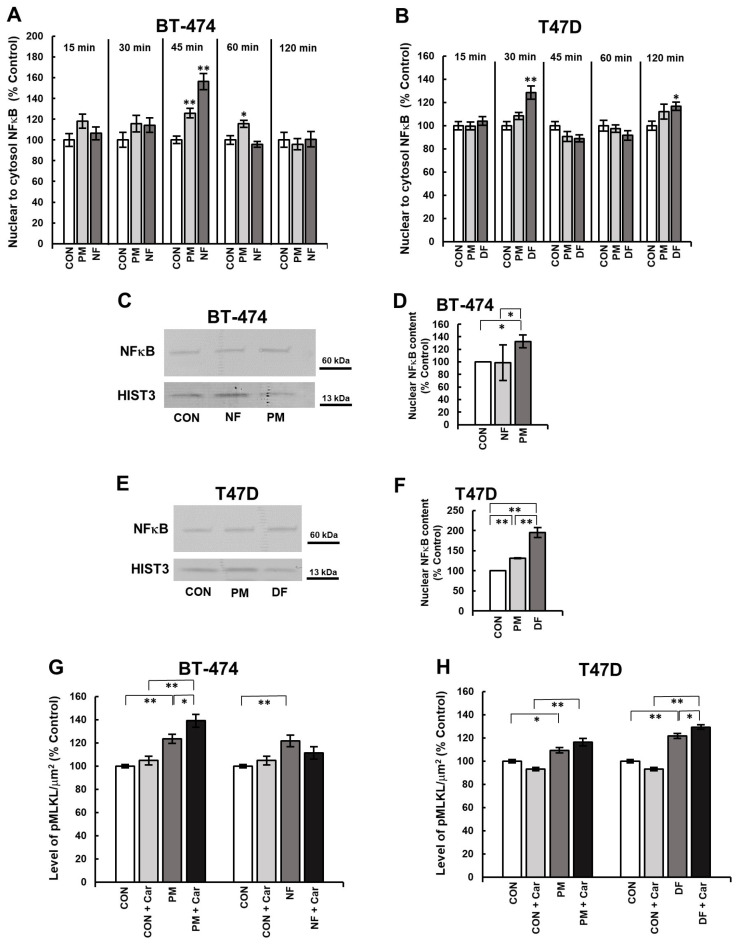Figure 2.
DS stimulated the activation of NFκB and via this process affected the phosphorylation of MLKL in luminal breast cancer cells. (A,B) the dynamics of the DS variant-mediated activation of NFκB in the BT-474 (A) and T-47D (B) cells. The cells had been exposed to the DS variants (PM–DS from porcine intestinal mucosa, NF–DS from normal human fascia and DF–DS from fibrosis-affected human fascia) at a concentration of 25 µg/mL for the indicated periods of time. Then, the cellular localization of NFκB was detected by an immunofluorescence using 1.5 µg/mL of polyclonal antibodies against the human p65 unit (Abcam). The activation of NFκB was calculated as the ratio of nuclear to cytoplasmic immunofluorescence for all of the visible cells. The results are presented as the percentage of the effect that was seen in the untreated control and are expressed as the mean ± SEM for the six non-overlapping images that were obtained in three independent experiments. (C,E) The DS variants significantly increased the nuclear pool of NFκB in the BT-474 (C) and T-47D (E) cells, as assessed by a Western blotting analysis. The cells had been exposed to the tested DS variants for 45 min (BT-474 line) or 30 min (T-47D line). Then, the cells were homogenized after swelling in hypotonic HEPES buffer, pH 7.9, and the nuclear fraction was separated by centrifugation. The nuclear proteins (2.5 μg) were submitted to SDS-PAGE and detected by immunoblotting with polyclonal anti-human p65 unit antibodies (Abcam) at a concentration of 0.5 µg/mL. Original Western blots can be found in Supplementary Materials. (D,F) Quantitative analysis of the obtained immunoblots illustrates the maximum ability of the tested DS variants to stimulate the activation of NFκB in BT-474 (D) and T-47D (F) cells. The levels of nuclear NFκB were normalized to histone H3 content. The results are expressed as the percentage of the effect that was visible in the untreated controls and are presented as the mean ±SD for three independent experiments. */**—statistically significant differences (p < 0.05/p < 0.01, respectively). (G,H) An inhibition of NFκB by 20 µM cardamonin (Car) significantly increased the DS-promoted activation of MLKL in the BT-474 (G) and T-47D (H) cells in a manner that was dependent on the structure of the glycan. The cells were preincubated with Car for 3 h, and then exposed to a combination of the inhibitor and individual DS variant for 3.5 h. The activation of MLKL was assessed by immunofluorescence. The results are expressed as the percentage of the effect that was visible in the untreated controls and are presented as the mean ± SEM for all of the images that were obtained in three independent experiments. */**—statistically significant differences (p < 0.05/p < 0.01, respectively).

